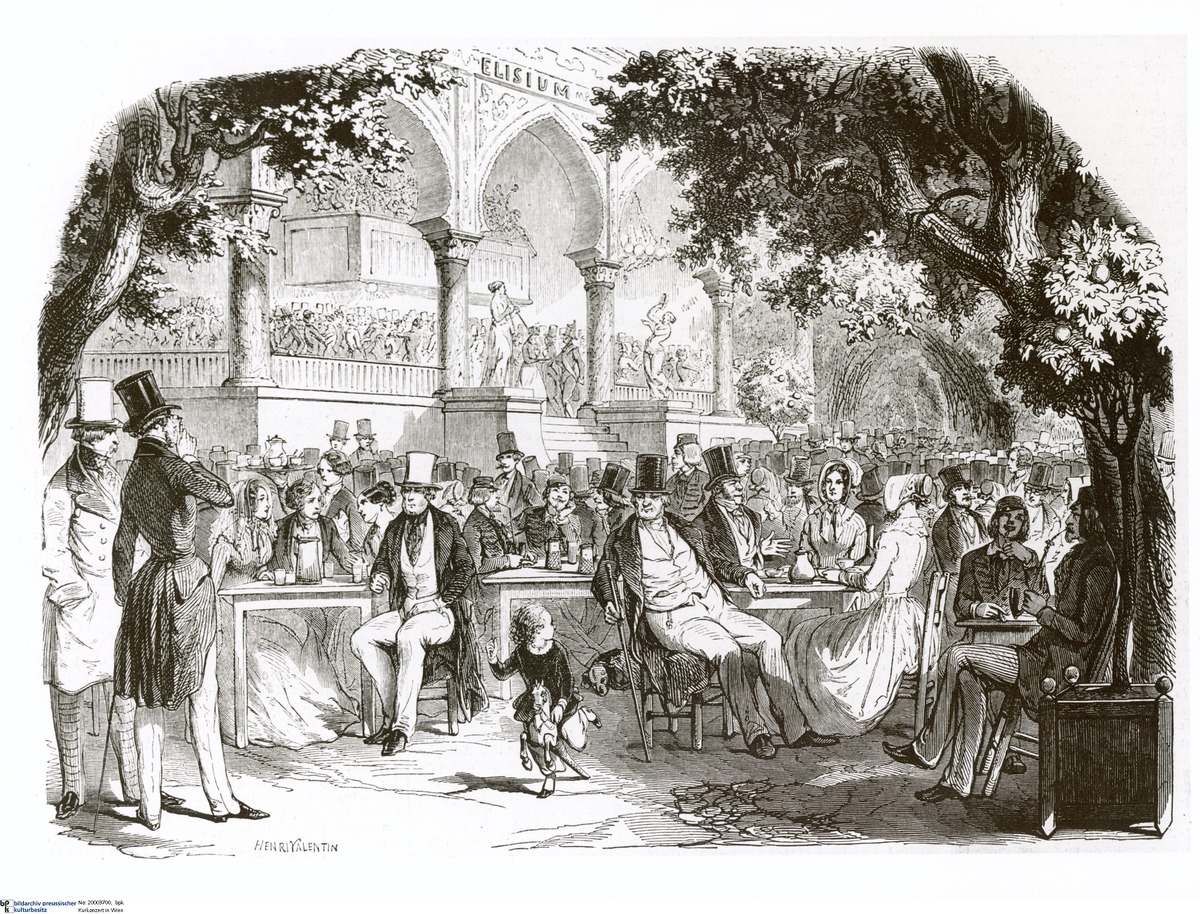Abstract
Health resorts or spas have a long tradition dating back to the ancient Greek and Roman baths. They declined during the Early Modern period, which saw periods when bathing and washing were deemed unhealthy, but in the eighteenth century the development of seaside resorts in Britain, and the subsequent revival of hot springs, marked a renaissance for spas; taking the waters became a fashionable activity. Nineteenth-century Germany, too, saw the proliferation of spas for a privileged clientele as well as the growth of public bathing and washing facilities for the common people. The spas were concerned, on the one hand, with hygiene, therapeutic treatments, and relaxation. On the other hand, they also served as meeting places for members of high society, including royalty, politicians, and diplomats. This engraving of a concert at a spa in Vienna suggests that these resorts treated body, mind, and spirit, offering guests an elaborate architectural setting and a wide range of cultural activities in addition to physical treatments. Wood engraving by Henry A. Valentin (1822–1855), 1847.
